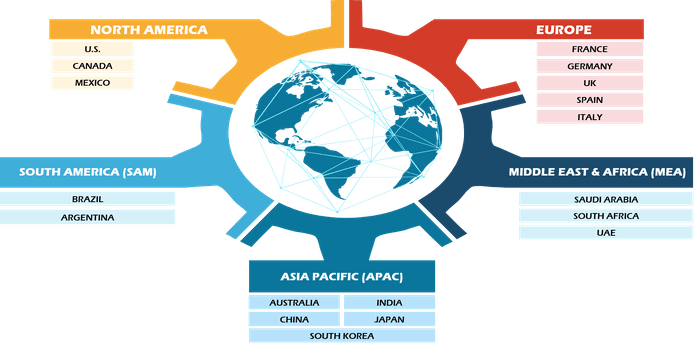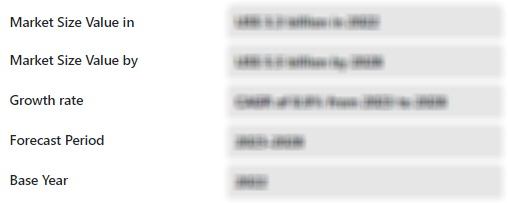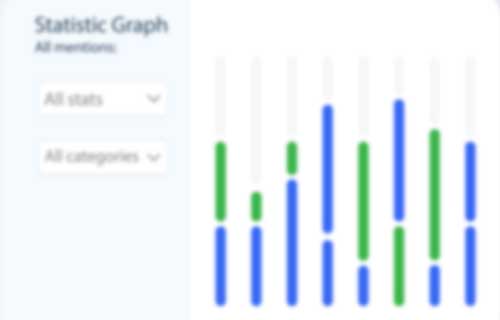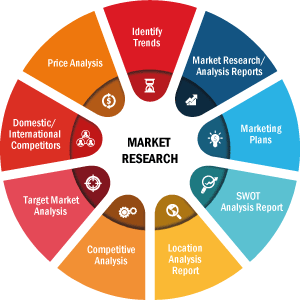The Global Next Generation Solar Cell market size was valued at US$ 4.13 billion in 2024 and is expected to reach US$ 12.95 billion by 2031. The Next Generation Solar Cell market is estimated to record a CAGR of 15.73% from 2025 to 2031. The sustainability and green manufacturing are likely to remain a key trend in the market.
Next Generation Solar Cell Market Analysis
The Next-Generation Solar Cell market is gaining momentum, driven by a global push toward clean energy, innovation in photovoltaic technology, and evolving energy consumption patterns. One of the primary market drivers is the growing demand for high-efficiency, low-cost solar solutions. Next-gen technologies—such as perovskite, organic photovoltaic (OPV), and tandem solar cells—offer improved energy conversion rates, flexibility, and lightweight designs, making them attractive for a wide range of applications, from building-integrated photovoltaics to portable electronics. Rising environmental concerns and net-zero commitments are prompting governments and corporations to invest in advanced renewable energy technologies. Incentives, subsidies, and R&D funding across regions such as Europe, North America, and Asia-Pacific are accelerating the commercialization of emerging solar technologies.
Next Generation Solar Cell Market Overview
Next-generation solar cells represent the evolution of photovoltaic technology, offering higher efficiency, lower manufacturing costs, and greater versatility compared to traditional silicon-based solar panels. These advanced solar cells include technologies such as perovskite, organic photovoltaics (OPV), quantum dot, multi-junction, and thin-film cells. They are designed to overcome the limitations of conventional systems by delivering superior performance under varied lighting conditions, lightweight and flexible form factors, and potential integration into a wide range of surfaces and products. Additionally, the potential for lower production costs and easier scalability makes these technologies appealing for large-scale deployment. Companies are increasingly investing in R&D and forming strategic partnerships to commercialize next-gen solar solutions, backed by supportive government policies and sustainability mandates. As the global economy shifts toward cleaner energy and carbon-neutral goals, next-generation solar cells are positioned as a strategic asset—enabling businesses to innovate, reduce energy costs, and align with long-term environmental commitments.
Strategic Insights
Next Generation Solar Cell Market Drivers and Opportunities
Growing Need for Lightweight and Flexible Solutions to Favor Market
The demand for lightweight and flexible solar technologies is rapidly growing as industries look to integrate renewable energy into non-traditional, mobile, and space-constrained applications. Conventional silicon-based solar panels are rigid, heavy, and limited in form factor, which restricts their usability in sectors such as aerospace, automotive, consumer electronics, and construction. Next-generation solar cells—particularly thin-film, organic photovoltaics (OPVs), and perovskite-based cells—offer significant advantages. These technologies can be manufactured on lightweight, flexible substrates such as plastic, glass, or metal foils, making them ideal for curved or moving surfaces. For instance, in aerospace and drone technology, weight is a critical factor. Ultra-light solar films help extend flight time and power on-board systems without adding significant mass. In the automotive sector, flexible solar panels are being integrated into vehicle rooftops and windows to charge batteries and power in-car systems, supporting the growing push toward energy-efficient electric vehicles (EVs). Similarly, in consumer electronics, flexible solar materials enable the creation of energy-harvesting wearables, sensors, and mobile devices.
Rising Global Energy Demand and Electrification
The global shift toward electrification is accelerating rapidly, driven by the widespread adoption of electric vehicles (EVs), smart homes, industrial automation, and expanding urban infrastructure. This transformation is creating an unprecedented demand for clean, reliable, and decentralized sources of electricity. Traditional energy systems, often reliant on fossil fuels and centralized grids, are increasingly inadequate in meeting the dynamic and distributed energy needs of modern economies. Next-generation solar technologies are emerging as a vital solution to this challenge. Unlike conventional panels, advanced solar cells—such as perovskite, organic photovoltaics (OPVs), and tandem cells—offer higher efficiency, flexible integration, and scalability, making them ideal for diverse use cases. They can be deployed across rooftops, vehicles, infrastructure, and mobile devices, supporting a decentralized energy model that reduces grid dependency and transmission losses.
Next Generation Solar Cell Market Report Segmentation Analysis
Key segments that contributed to the derivation of the Next Generation Solar Cell market analysis are material type, installation type, and end user
- Based on material type, the market is segmented into Cadmium Telluride (Cdte), Copper Indian Gallium Selenide (CIGS), Perovskite, Nanomaterials, and Others.
- On the basis of installation type, the market is bifurcated into On-Grid, and Off-Grid.
- Based on end user, the market is segmented into Residential, Commercial, and Industrial.
Next Generation Solar Cell Market Share Analysis by Geography
The geographic scope of the Next Generation Solar Cell market report is mainly divided into five regions: North America, Europe, Asia Pacific, Middle East and Africa, South and Central America.
Asia Pacific dominated the market in 2024. The Asia-Pacific region is emerging as a key growth hub for the next-generation solar cell market, driven by strong policy support, rapid industrialization, and the region’s growing energy demand. Governments across countries like China, India, Japan, South Korea, and Australia are actively investing in renewable energy infrastructure to reduce dependency on fossil fuels and meet aggressive decarbonization targets. China, in particular, leads global solar manufacturing and is heavily investing in advanced solar technologies such as perovskite and tandem cells to maintain its market dominance. India is also expanding its solar capacity rapidly, creating opportunities for high-efficiency, low-cost next-gen cells that suit its climate and grid needs. Meanwhile, Japan and South Korea are leveraging innovation in organic and thin-film solar technologies to support domestic energy needs and export-led growth. Urbanization, rising electrification, and the push for energy access in rural and remote areas are driving demand for lightweight, flexible, and decentralized solar solutions. Next-gen cells are ideal for these applications, including rooftop systems, mobile devices, and building-integrated photovoltaics (BIPV). Additionally, the region’s strong electronics and automotive industries create natural synergies with advanced solar technologies, particularly for integration into EVs and consumer devices. These factors collectively position Asia-Pacific as a major engine of innovation and adoption in the next-gen solar cell market.
Next Generation Solar Cell Market Report Scope
Next Generation Solar Cell Market News and Recent Developments
The Next Generation Solar Cell market is evaluated by gathering qualitative and quantitative data post primary and secondary research, which includes important corporate publications, association data, and databases. A few of the developments in the Next Generation Solar Cell market are listed below:
- Hanwha Systems announced that its in-house venture, Flexell Space, has signed a Letter of Intent (LOI) with Airbus Defence and Space GmbH for a collaboration on the development of next-generation space solar cell modules using tandem solar cells. Through this agreement, Flexell Space and Airbus plan to design and develop space solar cell modules that are more than 50% lighter than existing models, while maintaining equivalent performance and efficiency. (Source: Hanwha Systems, Press Release, August 2024)
- Navitas Solar, a Surat based leading module manufacturing brand in the India with manufacturing capacity of 2 GW p.a. launches its latest next generation N-Type TOPCon modules at The Smarter E India – Intersolar India 2024. N-type TOPCon technology is well known for its remarkable energy yield and low temperature coefficient and improves the overall efficiency and lifespan of the solar modules. (Source: Navitas Solar, Press Release, February 2024)
Next Generation Solar Cell Market Report Coverage and Deliverables
The “Next Generation Solar Cell Market Size and Forecast (2021–2031)” report provides a detailed analysis of the market covering below areas:
- Next Generation Solar Cell market size and forecast at global, regional, and country levels for all the key market segments covered under the scope
- Next Generation Solar Cell market trends as well as market dynamics such as drivers, restraints, and key opportunities
- Detailed PEST/Porter’s Five Forces and SWOT analysis
- Next Generation Solar Cell market analysis covering key market trends, global and regional framework, major players, regulations, and recent market developments
- Industry landscape and competition analysis covering market concentration, heat map analysis, prominent players, and recent developments for the Next Generation Solar Cell market
- Detailed company profiles

Have a question?

Naveen
Naveen will walk you through a 15-minute call to present the report’s content and answer all queries if you have any.
 Speak to Analyst
Speak to Analyst
- Sample PDF showcases the content structure and the nature of the information with qualitative and quantitative analysis.
- Request discounts available for Start-Ups & Universities
- Sample PDF showcases the content structure and the nature of the information with qualitative and quantitative analysis.
- Request discounts available for Start-Ups & Universities

Report Coverage
Revenue forecast, Company Analysis, Industry landscape, Growth factors, and Trends

Segment Covered
This text is related
to segments covered.

Regional Scope
North America, Europe, Asia Pacific, Middle East & Africa, South & Central America

Country Scope
This text is related
to country scope.
Frequently Asked Questions
The sustainability and green manufacturing are likely to remain a key trend in the market.
Asia Pacific dominated the Next Generation Solar Cell market in 2024.
The growing need for lightweight and flexible solutions and rising global energy demand and electrification are the major factors driving the market.
Hanwha Q CELLS, Oxford PV, Kaneka Solar Energy, Flisom, and Mitsubishi Chemical Group are among the leading players in the Next Generation Solar Cell market.
The estimated value of the Next Generation Solar Cell market is expected to reach US$ 12.95 billion by 2031.
The market is expected to grow at a CAGR of 15.73% over the forecast period.
Yes! We provide a free sample of the report, which includes Report Scope (Table of Contents), report structure, and selected insights to help you assess the value of the full report. Please click on the "Download Sample" button or contact us to receive your copy.
Absolutely - analyst assistance is part of the package. You can connect with our analyst post-purchase to clarify report insights, methodology or discuss how the findings apply to your business needs.
Once your order is successfully placed, you will receive a confirmation email along with your invoice.
• For published reports: You'll receive access to the report within 4-6 working hours via a secured email sent to your email.
• For upcoming reports: Your order will be recorded as a pre-booking. Our team will share the estimated release date and keep you informed of any updates. As soon as the report is published, it will be delivered to your registered email.
We offer customization options to align the report with your specific objectives. Whether you need deeper insights into a particular region, industry segment, competitor analysis, or data cut, our research team can tailor the report accordingly. Please share your requirements with us, and we'll be happy to provide a customized proposal or scope.
The report is available in either PDF format or as an Excel dataset, depending on the license you choose.
The PDF version provides the full analysis and visuals in a ready-to-read format. The Excel dataset includes all underlying data tables for easy manipulation and further analysis.
Please review the license options at checkout or contact us to confirm which formats are included with your purchase.
Our payment process is fully secure and PCI-DSS compliant.
We use trusted and encrypted payment gateways to ensure that all transactions are protected with industry-standard SSL encryption. Your payment details are never stored on our servers and are handled securely by certified third-party processors.
You can make your purchase with confidence, knowing your personal and financial information is safe with us.
Yes, we do offer special pricing for bulk purchases.
If you're interested in purchasing multiple reports, we're happy to provide a customized bundle offer or volume-based discount tailored to your needs. Please contact our sales team with the list of reports you're considering, and we'll share a personalized quote.
Yes, absolutely.
Our team is available to help you make an informed decision. Whether you have questions about the report's scope, methodology, customization options, or which license suits you best, we're here to assist. Please reach out to us at sales@theinsightpartners.com, and one of our representatives will get in touch promptly.
Yes, a billing invoice will be automatically generated and sent to your registered email upon successful completion of your purchase.
If you need the invoice in a specific format or require additional details (such as company name, GST, or VAT information), feel free to contact us, and we'll be happy to assist.
Yes, certainly.
If you encounter any difficulties accessing or receiving your report, our support team is ready to assist you. Simply reach out to us via email or live chat with your order information, and we'll ensure the issue is resolved quickly so you can access your report without interruption.
The Insight Partners performs research in 4 major stages: Data Collection & Secondary Research, Primary Research, Data Analysis and Data Triangulation & Final Review.
- Data Collection and Secondary Research:
As a market research and consulting firm operating from a decade, we have published many reports and advised several clients across the globe. First step for any study will start with an assessment of currently available data and insights from existing reports. Further, historical and current market information is collected from Investor Presentations, Annual Reports, SEC Filings, etc., and other information related to company’s performance and market positioning are gathered from Paid Databases (Factiva, Hoovers, and Reuters) and various other publications available in public domain.
Several associations trade associates, technical forums, institutes, societies and organizations are accessed to gain technical as well as market related insights through their publications such as research papers, blogs and press releases related to the studies are referred to get cues about the market. Further, white papers, journals, magazines, and other news articles published in the last 3 years are scrutinized and analyzed to understand the current market trends.
- Primary Research:
The primarily interview analysis comprise of data obtained from industry participants interview and answers to survey questions gathered by in-house primary team.
For primary research, interviews are conducted with industry experts/CEOs/Marketing Managers/Sales Managers/VPs/Subject Matter Experts from both demand and supply side to get a 360-degree view of the market. The primary team conducts several interviews based on the complexity of the markets to understand the various market trends and dynamics which makes research more credible and precise.
A typical research interview fulfils the following functions:
- Provides first-hand information on the market size, market trends, growth trends, competitive landscape, and outlook
- Validates and strengthens in-house secondary research findings
- Develops the analysis team’s expertise and market understanding
Primary research involves email interactions and telephone interviews for each market, category, segment, and sub-segment across geographies. The participants who typically take part in such a process include, but are not limited to:
- Industry participants: VPs, business development managers, market intelligence managers and national sales managers
- Outside experts: Valuation experts, research analysts and key opinion leaders specializing in the electronics and semiconductor industry.
Below is the breakup of our primary respondents by company, designation, and region:

Once we receive the confirmation from primary research sources or primary respondents, we finalize the base year market estimation and forecast the data as per the macroeconomic and microeconomic factors assessed during data collection.
- Data Analysis:
Once data is validated through both secondary as well as primary respondents, we finalize the market estimations by hypothesis formulation and factor analysis at regional and country level.
- 3.1 Macro-Economic Factor Analysis:
We analyse macroeconomic indicators such the gross domestic product (GDP), increase in the demand for goods and services across industries, technological advancement, regional economic growth, governmental policies, the influence of COVID-19, PEST analysis, and other aspects. This analysis aids in setting benchmarks for various nations/regions and approximating market splits. Additionally, the general trend of the aforementioned components aid in determining the market's development possibilities.
- 3.2 Country Level Data:
Various factors that are especially aligned to the country are taken into account to determine the market size for a certain area and country, including the presence of vendors, such as headquarters and offices, the country's GDP, demand patterns, and industry growth. To comprehend the market dynamics for the nation, a number of growth variables, inhibitors, application areas, and current market trends are researched. The aforementioned elements aid in determining the country's overall market's growth potential.
- 3.3 Company Profile:
The “Table of Contents” is formulated by listing and analyzing more than 25 - 30 companies operating in the market ecosystem across geographies. However, we profile only 10 companies as a standard practice in our syndicate reports. These 10 companies comprise leading, emerging, and regional players. Nonetheless, our analysis is not restricted to the 10 listed companies, we also analyze other companies present in the market to develop a holistic view and understand the prevailing trends. The “Company Profiles” section in the report covers key facts, business description, products & services, financial information, SWOT analysis, and key developments. The financial information presented is extracted from the annual reports and official documents of the publicly listed companies. Upon collecting the information for the sections of respective companies, we verify them via various primary sources and then compile the data in respective company profiles. The company level information helps us in deriving the base number as well as in forecasting the market size.
- 3.4 Developing Base Number:
Aggregation of sales statistics (2020-2022) and macro-economic factor, and other secondary and primary research insights are utilized to arrive at base number and related market shares for 2022. The data gaps are identified in this step and relevant market data is analyzed, collected from paid primary interviews or databases. On finalizing the base year market size, forecasts are developed on the basis of macro-economic, industry and market growth factors and company level analysis.
- Data Triangulation and Final Review:
The market findings and base year market size calculations are validated from supply as well as demand side. Demand side validations are based on macro-economic factor analysis and benchmarks for respective regions and countries. In case of supply side validations, revenues of major companies are estimated (in case not available) based on industry benchmark, approximate number of employees, product portfolio, and primary interviews revenues are gathered. Further revenue from target product/service segment is assessed to avoid overshooting of market statistics. In case of heavy deviations between supply and demand side values, all thes steps are repeated to achieve synchronization.
We follow an iterative model, wherein we share our research findings with Subject Matter Experts (SME’s) and Key Opinion Leaders (KOLs) until consensus view of the market is not formulated – this model negates any drastic deviation in the opinions of experts. Only validated and universally acceptable research findings are quoted in our reports.
We have important check points that we use to validate our research findings – which we call – data triangulation, where we validate the information, we generate from secondary sources with primary interviews and then we re-validate with our internal data bases and Subject matter experts. This comprehensive model enables us to deliver high quality, reliable data in shortest possible time.





 Get Free Sample For
Get Free Sample For